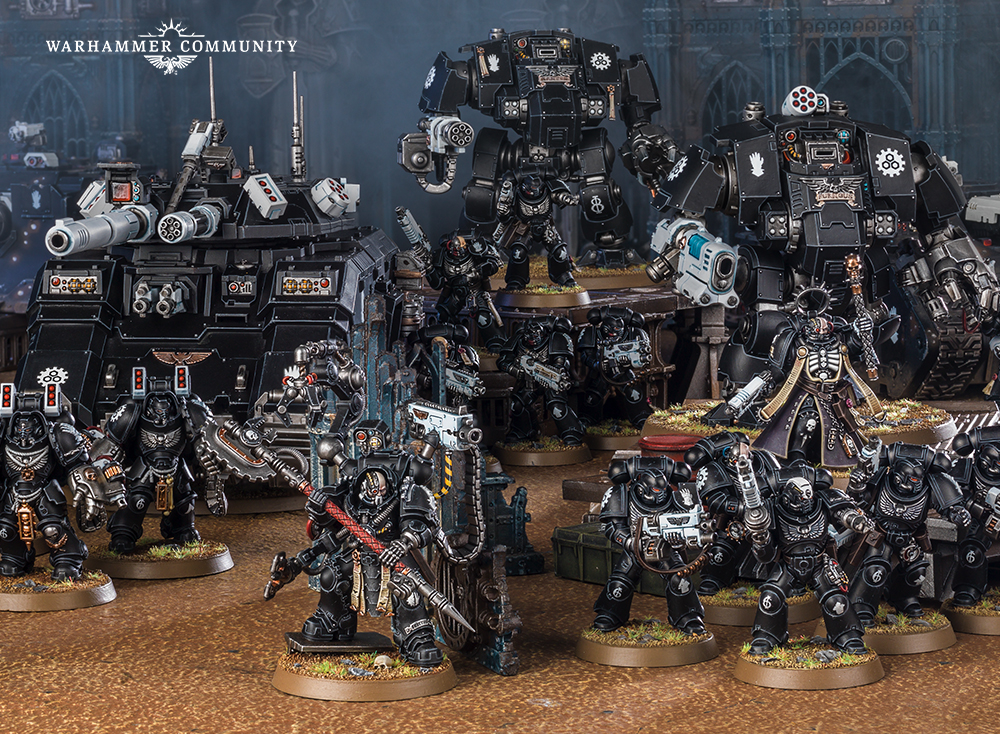Don’t worry, there won’t be any math in this one. Unless you count binomial curve conversions and multivariable integration as math, of course! I’m just kidding, those aren’t real things.
(they are and they’re right behind you)

There are a lot of interesting things we’ve seen in the previews of 9th so far, and while details are still somewhat scarce and most assessments of what the game will be like are largely just speculative, we do have some concrete details. And, buried among them, I think there is one thing that has been largely overlooked: the missions.
Of course, lots of people have said their piece on the missions themselves. We’ve seen that there will be separate missions for the different game sizes, which is a very good change, and we’ve seen that deployment maps appear to be fixed to each mission, which is an interesting choice. We also know that there are secondary missions, with five different categories of them, and that these are picked off a list before each game in much the style that a lot of tournaments have moved to. But I feel that the most interesting thing about these missions so far is… well, not about the missions at all, really, but rather the community response to them.
You see, the Warhammer community has always been massively fragmented. It’s been this way almost since the beginning, when the game was just played by a handful of folks in their individual basements back in the early 90s. As it grew, these groups of players connected together and started to interact with each other, and since there was no real internet at the time each little group came up with their own idea of what was good, what was bad, what was fair, and what was unfair. Games Workshop set out mission rules of its own, but they were largely narrative in goals and made only token attempts to be at all balanced.
These trends largely continued all the way up through 4th edition- the Games Workshop missions were still quite unbalanced, and individual communities across the world each played 40K “their” way with other local players, using local interpretations of the rules and local missions. As 5th Edition dawned, though, communication on the internet became more of a reality, as did independent tournaments- because it was more and more clear that Games Workshop simply was not willing to step up and create any kind of balanced, interesting competitive format (‘Ard Boyz certainly didn’t count) and so that job fell to the players.
This meant that each different tournament had their own mission pack and own FAQs as addendum to GW’s versions of these things, which were quite inadequate to the task. Some of them (such as NOVA or Adepticon) were quite large and had a lot of influence in discussion of the game and theory, but even so you could still expect that any time you traveled to a tournament you were likely to see a unique format, points total, rules used, mission pack, etc.

But through the last couple of editions we saw a trend, a trend of unification- bigger tournament packs swallowed the smaller ones. NOVA, the ITC, the ETC, and others gained in popularity, and bit by bit they nibbled away at the smaller formats. There was pressure for individual events to conform to more widely-accepted standards, so that players could practice them and get better at them. But the landscape was still fragmented in the extreme- what you might see in the west coast of the USA was not what you would see on the east, or in the Midwest, or in Europe. Most events had fallen in line behind one of the six or seven major formats, but the divisions between these formats were often quite wide still.
8th Edition closed those gaps; mission packs grew to resemble each other more and more as TOs were in regular communication and hard data from events could show us what worked and what did not in terms of both missions and factions.
Now, on the verge of 9th, we are entering a new age. In some ways it is a callback to earlier editions- it has been essentially five whole versions of the game since it happened last, but the word is out: virtually every major tournament and format has announced that they are going to be using the mission pack provided by Games Workshop. I have no doubt that there will be some individual tweaks, but the TO community has mostly all spoken with one voice on the subject, and they are committed to using the base rulebook missions.
This is the Grand Warhammer Unification Theory, at last. People from all regions of the world, players of all types, playing the same missions with the same army building rules. In fact, we can probably expect that almost all tournaments will use the same point values, even- another thing all but unheard of in the game’s past, since the “recommended” values varied wildly. We have gotten to the point where not only is the community talking enough to make a widespread agreement to do this, but also that Games Workshop is listening and caring enough to pay attention to what the community is saying and try to do a good job of satisfying them.

Is 9th Edition going to be perfect? Of course not. It might not necessarily even be better than 8th; we’ve certainly seen the game regress before (5th -> 6th -> 7th being good examples), but all of that is still on the distant horizon at this point. What’s most important, though, is that the game has finally grown enough that we can speak about the game, as a whole, and actually be able to say something meaningful about it- because for once we are all playing one game. This is absolutely fundamental to helping the game grow further, and the fact that it’s taken this long to get here is… well, it’s not great, but at least we are here, at last. Can you imagine if the NBA or Olympics had dozens of different formats scattered around and each team played by a different set of rules in their local arena? It makes any kind of coherent discussion of the game quite difficult, because everyone ends up working under different assumptions.
We still don’t know how good the missions are; Reece and others say they like them, and that’s probably a good sign, but until we get further testing by the players we don’t know for sure just how balanced they are. But the fact that we are all playing them, as a community, is a big step forward. Hopefully we can continue this trend as Warhammer grows and expands, because the more universal we can make it, the more accessible we can make the game, and the more players we can draw into it, the better off we all will be.
As always, remember that you can get your wargaming products at great discounts every day from the Frontline Gaming store, whether you’re looking to start a new army or expand an existing one.


Indeed.
Playing the same six missions over and over again seems like a very special circle of hell.
I’ll reserve judgement until I actually see them though, let’s hope they’re dynamix enough.
The ITC mostly already plays the same six missions over and over again. It does mix up deployments, but if the deployments are specific to the missions (and objectives are player-placed, which seems to be the case in at least some of them) I think it is less of an issue.
Being able to choose secondary objectives helps a lot, and I can all but guarantee that later this year GW will release Chapter Approved 2020 with at least six more missions in it to mix things up.
Absolutely, and if I’d had to play the same 6 ITC missions on every tournament I’d be sick of them too. But over here in Sweden about one in three tournaments ran ETC or custom missions still which felt like a decent mix.
Probably less of an issue if you attend less than one tournament a month (or something like that) though.
Despite the article, I don’t think custom missions will disappear entirely- as you say, some people will get bored with the basic ones, or think they can improve on them, or just want to keep playing how they have been playing. I have no doubt at all that there will still be tournaments that use their own missions- but I think that it will likely flip, so that custom missions are the exception rather than the rule.